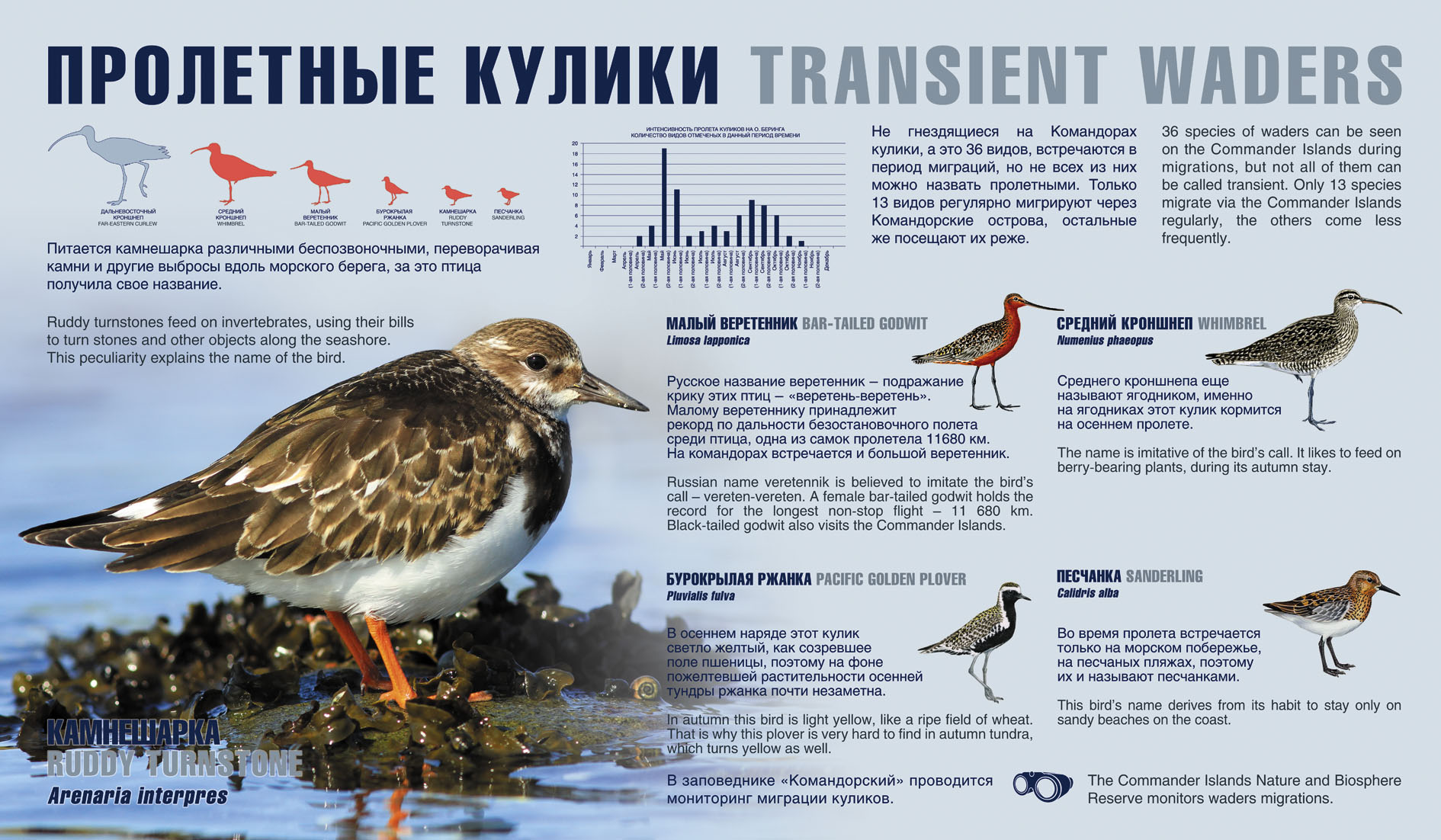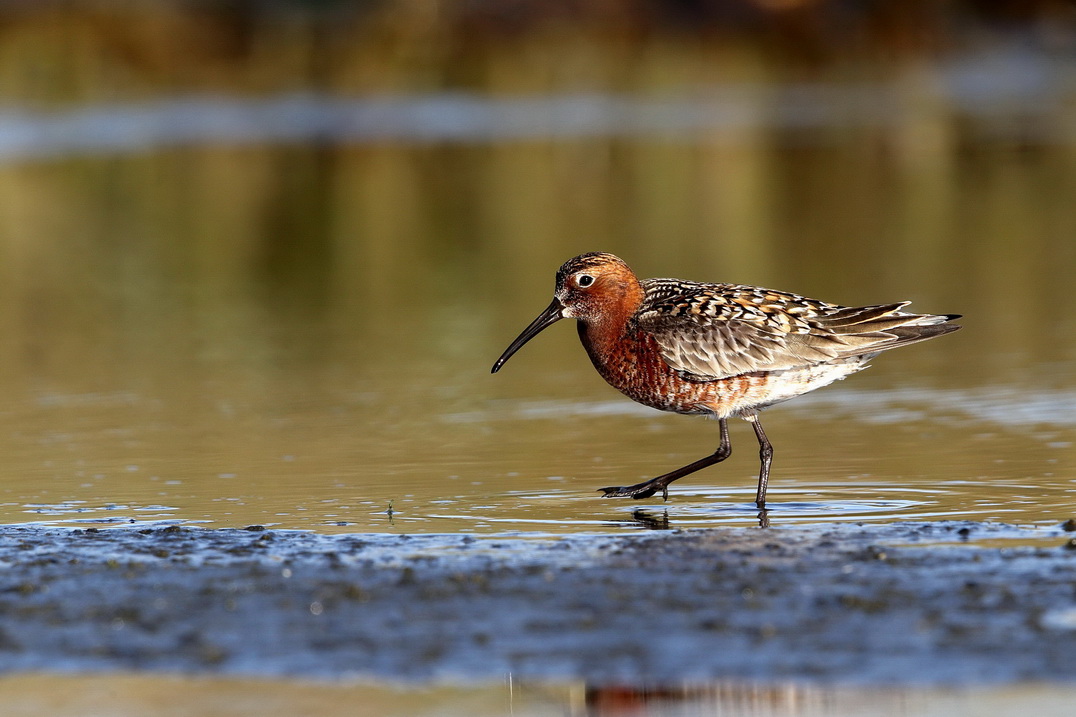On March 31 a new photo show of the Commander Islands Nature and Biosphere Reserve will start in the Museum of the World Ocean in Kaliningrad. The show is called The Waders. Stopover or Life on the Island and will last till May 21. Our reserve is happy to invite everybody to see the unique photos of waders, which are remarkable for their diversity, fitness for coastal habitat and long transcontinental flights.
181 wader species are now known for science and grouped into 14 families. 43 species were spotted on the Commander Islands, 7 of which build their nests here. Some of the resting 36 species are regular guests during seasonal migrations and some are very hard to find here.
Rock sandpiper is the only species, which prefer to stay on the islands all year round. Photo by Dmitry Pilipenko
Waders inhabit all continents, including Antarctic and Arctic. They are adapted for different climatic and geographical conditions. Waders can be found in mountainous regions at a height of 4 500 meters, in lifeless ice landscapes or in hot deserts, in tundra regions, forests and prairies.
The majority of these birds prefer to nestle in wet, open spaces. It is interesting, that waders, nestling in cold or temperate regions, migrate and those, nestling in warm countries, do not like to leave their native places and just wander around.
Black-tailed godwit. Photo by Evgeny Mamaev
Waders differ in sizes, constitution and weight. Some adult individuals can hardly weight more then 30 grams and fit in a hand. Far-Eastern curlew, on the opposite, is the largest of Russian waders and weight up to 1 300 grams with wingspan of 1 meter! Moreover, waders hold records, not just other birds, but every aircraft designer may envy.
For example, a female bar-tailed godwit holds the absolute record of the longest non-stop flight. This middle-sized bird covered 11 680 km on its way from Alaska to New Zealand. Compare it to the longest commercial flight, which connected Oakland (New Zealand) and Doha (Qatar) and covered 14 535km.
It is hard to believe, but bar-tailed godwits can cover more then 10 000 km without landing. Photo by Alexander Shiyenok
Unfortunately, many waders are now endangered. According to RSPB studies, 7 species are among the most endangered species in the world, because of degradation of their habitats, especially those used during migrations – wetlands and coastal areas. A quarter of vital mudflat habitats in the Yellow Sea have been lost since the 1980s, and most of the remainder are badly-degraded. The main reasons are global climate changes, human activity, such as dewatering, agricultural usage of wetlands and coastal activity.

This informational stand and others are exhibited in the Museum of the World Ocean
The exhibition of the Commander Islands Nature and Biosphere Reserve is dedicated to the International Bird Day, which is celebrated on April 1. This holiday appeared in 1906 with the signature of International Convention for Bird Protection. Our colleagues took part in the preparation of this exhibition. You will see photos of Deputy Director for Science Evgeny Mamaev, researcher and ornithologist Dmitry Pilipenko and senior researcher Alexander Shiyenok.
The main photo depicts a curlew sandpiper. Photo by Evgeny Mamaev










